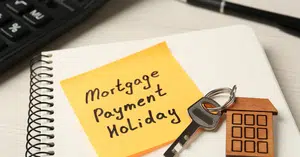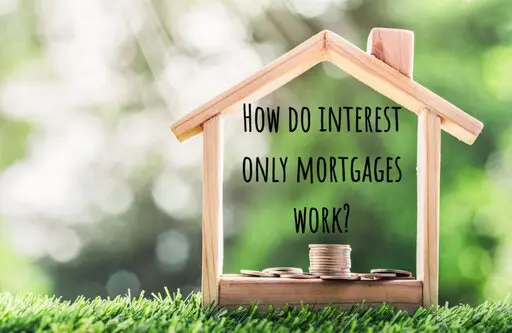This article explains how a Mortgage Holiday, or an Interest Only period, could help you reduce your home loan repayments temporarily. We also look at the impacts of both.
Some borrowers in New Zealand are facing financial difficulties, and many home owners find it hard to cope. We demonstrate how different strategies could bring temporary relief and help, but is not intended for long term purposes.
By lowering your monthly mortgage payments, you can enjoy some short-term relief and help with reducing your mortgage payments. Some home owners and investors are guided by their Accountant, to opt for Interest Only or Mortgage Holiday approvals, soley for tax purposes.
Before making a decision that will affect your finances in the long run, you should weigh up both the pros and cons.


Reduce payments with a Mortgage Holiday
Mortgage holidays, also called “repayment deferrals,” allow you to stop making mortgage payments for a certain amount of time. This helps if you are having trouble meeting your monthly bills because of something out of your control. As an example only, you may choose to opt for a Mortgage Holiday, due to a temporary loss of income.
But it’s important to remember that you still have to pay back the full amount, plus any interest that has been accumulated in the back ground!
Example of mortgage holiday savings
- The original amount of the loan was $500,000
- Interest Rate: 4% per year
- The loan is for 30 years, and the regular monthly principal and interest mortgage payment is $2,387
Let’s say for example, that you qualify for a 6-month mortgage holiday. So for 6 months you don’t have to pay anything on the loan. Therefore, you get immediate relief of $2,387 per month. However, interest keeps adding to the amount that is still owed.
Calculation:
Interest over 6 months: Original loan amount / monthly interest rate x period of mortgage holiday period in months. The interest rate each month (4% divided by 12 months) = 0.33%
So, $500,000 x 0.33% x 6 months = $9,900 in interest over a 6 month period. This amount will then get added to the loan (as a minimum) and your repayments will be recalculated at the end of the mortgage holiday term.
Possible Savings: Relief of $2,387 per month for 6 months because you are not making payments. The interest however gets added to the loan amount, resulting in a higher overall loan amount, compared to when you originally started, plus additional costs to cover the interest of the loan.

Make payments affordable with Interest Only
Interest-only mortgages (IO), on the other hand, are a different way to lower your mortgage payments. You only need to pay the interest on the loan for a certain amount of time. This means that the amount of the loan’s principal doesn’t change during this time, so the monthly payments are smaller, which helps with repayments.
Example of switching to Interest Only
- The original amount of the loan was $500,000
- Interest Rate: 4% per year
- The loan is for 30 years, and the monthly principal and interest mortgage payment is $2,387
Let’s assume you switch for a period of 2 years. During this time, you only need to make interest payments, and the principal balance remains unchanged.
Calculation:
Monthly Interest Payment: $500,000 x 4% / 12 months = $1,667 in interest payments, for one month.
Potential Savings: You can reduce your monthly mortgage payment from $2,387 (principal and interest) to $1,667 (interest only). This results in a monthly savings of $720 per month for the 2-year period.
These calculations provide a simplified example to illustrate the potential savings from a mortgage repayment holiday and changing the mortgage structure temporarily to interest only. Actual savings will vary based on individual mortgage terms, interest rates, and specific circumstances. It’s important to consult with a Mortgage Broker or Financial Adviser, to obtain accurate calculations, specific to your situation.
Get help from our mortgage experts who help you through these tough times. We carefully look at your finances and long-term goals. Understanding the pros and cons of each choice is very important if you want to make a good financial decision.
These methods can help in the short term, but it is important to think about how they might affect the loan term as a whole.

Advantages & Disadvantages of a Mortgage Holiday or Interest Only Option
Advantages:
- Help for your cash flow right away: Free up money with lower or no repayments.
- Flexibility: Gives you the freedom to manage your money and meet instant needs.
- Avoid Default or Foreclosure: Helps you avoid going into default on your loans or face foreclosure.
Disadvantages:
- Interest gets added: During the mortgage holiday, interest continues to be added to the amount. This can make the loan last longer and cost more in interest generally.
- Lengthened Loan Term: To make up for the delayed payments, lenders may lengthen the loan term, which makes the time it takes to pay back the loan, even longer.
- Possible financial stress in the future: Once the break is over, you’ll have to go back to making your regular mortgage payments, which may be higher because interest has built up or the loan term has been extended to compensate for the temporary break.
- The principal amount of the loan doesn’t go down at all during this period.
- Since the principal amount stays the same, the total interest paid over the life of the loan can be higher than with a traditional repayment plan.
- Future Payment Adjustments – may result in higher payments in the future.

Demonstrating Mortgage Holiday long term impact:
If mortgage payments were stopped for 6 months, then the interest that has been accruing in the background (of approx. $9,900 as illustrated above), gets added to the loan amount, then the impact is as follows:
Calculation:
- The loan was originally for 30 years, or 360 months – this will stay as is.
- The $500,000 loan amount increases by the interest of $9,900 approximately to $509,900.
- On a $500,000 mortgage, the total amount of interest to pay (before a mortgage holiday) is about $359,374 compared to interest of $366,569 (after a mortgage holiday) on a $509,900 mortgage.
- In this case, the mortgage break is helpful in the short term, but by increasing the loan amount by 6 months worth of interest, then this will increase the total amount of interest paid, by approx. $7,195 over the life of the loan.

Demonstrating Interest Only long term impact:
Assuming a two-year interest-only time, here’s how it affects the amount of interest paid.
Calculation:
- The loan was originally for 30 years, or 360 months.
- Time period you only pay interest: 2 years (24 months).
- After the Interest Only term expires, the repayment term gets reduced from 30 years to 28 years (336 months).
- Before switching, your regular principle and interest repayments are $2,387 monthly.
- Once on interest only, your repayments for the next two years, would be $1,667 monthly.
- After your interest only term expires, your repayments will revert back to principle and interest. The new home loan payments will be recalculated. This will be done, based on a 28 year term, appose to the original 30 year term. Your new repayments going forward, would have increased to $2,476 monthly.
So, during the two-year term, the monthly payments are cut down to only the interest. This gives you immediate relief. However, once the interest only term expires, then your regular principle and interest repayments are increased from $2,387 monthly, to $2,476 monthly.

Conclusion
So in summary, these examples show that even though these options can help in the short term, they can hurt in the long run, because the loan term may be longer and interest keeps adding up in the background.
Before making a choice, you should think carefully about these factors and weigh the short-term benefits against the long-term financial effects.
It’s important to remember that the exact calculations and effects will depend on the terms of the loan, the interest rate, and how long a period the mortgage holiday or interest only lasts.
Talk to your Mortgage Broker first, as they can give you more accurate calculations and will provide advice that best fits your unique situation.



